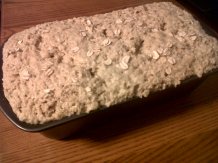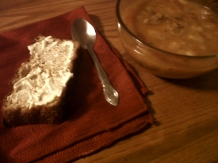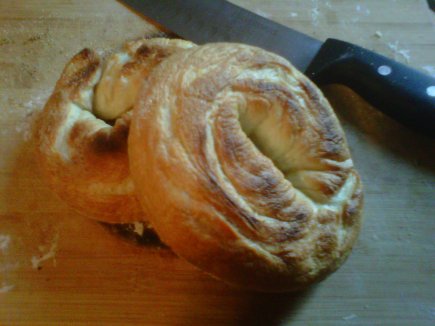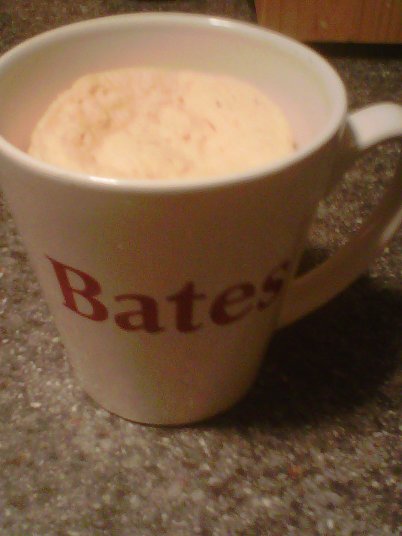
Bread and I have an interesting history. I began my life eating white bread, as did most children in the 80s. I was never one for the limp, dry crust, so my mother kindly removed it by cutting my sandwiches into circles and other creative shapes using cookie cutters. I was popular at lunch time! As the anti-white bread movement picked up steam in the 90s, my mother decided to switch us to potato and whole wheat breads. By whole wheat, I don’t mean the beautiful quality grainy breads that are available today. I’m talking about the bread that was little more than caramel colored white bread.
Eventually, I found my way to the beautiful whole grain breads with tangible bits of grain. Twelve-grain and honey oat breads became staples in my home. I had finally fallen in love with bread. I had my first experience with homemade bread when I was sick and a lovely older lady from my church brought over a freshly baked loaf and some chicken soup for me. WOW! If I had been in love with bread before, I was now over the moon. Sadly, the love affair ended when I became intolerant to wheat about two years ago.
Then, something amazing happened. I met a young woman with a ton of food allergies herself, including many of my own (wheat and corn among them) and she suggested a wheat and corn-free oat bread that she buys from a local health food store. While that sounded appealing (and a personal endorsement of a gluten-free product is important to me), I knew there had to be a way to make it myself. I found this recipe for Gluten-free Honey Oat Bread and it has been a minor miracle. It’s hearty, perfectly textured, wheat and corn-free, delicious, and amazingly easy! Even better, most of the ingredients are things I keep around the house anyways. Hopefully you’ll enjoy it as much as I did!
Ingredients
2 scant Tbsp yeast
1 1/2 Cups Warm water
1/4 Cup Olive oil
1/4 Cup + 2 Tbsp Honey (Agave may be substituted, see below**)
3 1/3 Cups Oat flour* (10.6 oz)
1/2 Cup Rice flour* (2.8 oz)
1/2 Cup Corn starch (or tapioca flour)
2 tsp Xanthan gum (for a xanthan gum replacement, I like this)
1 tsp Salt
4 Eggs, warmed to room temperature
Preheat the oven to 200° F. Line a 10 inch loaf pan with parchment paper and spray well with cooking spray.
Combine the yeast and water (105-115° F) and allow to sit for several minutes until the surface begins to foam. Add the oil, honey (or agave), flours, starch, and xanthan gum (or alternative) and beat until combined (do not use bread hooks). Add the salt and eggs. Beat for a few minutes minutes more until dough appears fluffy. Pour into the parchment lined loaf pan.
 Cover the loaf pan with a damp cloth. Turn the oven off, and place both the loaf pan and a shallow pan containing a small amount of water into the warmed oven. Allow the dough to rise for 20 to 30 minutes until doubled, checking after 20 minutes.
Cover the loaf pan with a damp cloth. Turn the oven off, and place both the loaf pan and a shallow pan containing a small amount of water into the warmed oven. Allow the dough to rise for 20 to 30 minutes until doubled, checking after 20 minutes.
 When the dough has risen, remove it from the oven and increase the temperature to 350° F. Sprinkle the top of the risen loaf with some more oats and cut a few slits in the top with a serrated knife. Bake for about 45 minutes. Removed the bread from the pan immediately and place on a wire rack. Allow to cool before cutting.
When the dough has risen, remove it from the oven and increase the temperature to 350° F. Sprinkle the top of the risen loaf with some more oats and cut a few slits in the top with a serrated knife. Bake for about 45 minutes. Removed the bread from the pan immediately and place on a wire rack. Allow to cool before cutting.
*You can make your own oat or rice flour by grinding dried oats or rice in a blender or food processor until they become a fine powder. When grinding my own, I found that the oat flour felt like a very fine powder and the rice flour retained a slightly gritty texture.
**If using agave nectar, reduce the temperature by 25° F and increase the baking time. The bread is done when the internal temperature reaches 200° F.



